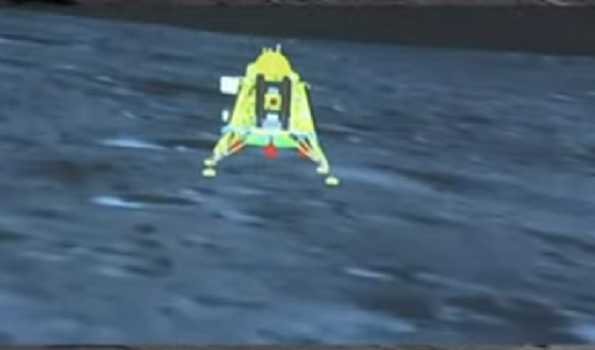Chennai, Aug 23 (UNI) Chandrayaan-3 is an Indian lunar mission that boldly reached where no country has ever gone before — the Moon’s south polar region.
All of the previous spacecraft to have landed on the Moon have landed in the region near the Moon’s equator, because it is easier and safer here.
The terrain and temperature are more conducive for a long and sustained operation of instruments. Sunlight is also present, offering a regular supply of energy to solar-powered instruments.
The polar regions of the Moon, however, are different. Many parts lie in a completely dark region without sunlight, and temperatures can go below 230 degrees Celsius, creating difficulty in the operation of instruments.
In addition, there are large craters all over the place.
As a result, the polar regions of the Moon have remained unexplored.
The extremely cold temperatures could mean that anything trapped in the region would remain frozen in time, without undergoing much change.
The rocks and soil in Moon’s north and south poles could therefore provide clues to the early Solar System.
The aim of the mission was to improve our understanding of the Moon, which could lead to discoveries that will benefit India and humanity as a whole.
These insights and experiences will cause a paradigm shift in how lunar expeditions are approached for years to come, propelling further voyages into the farthest frontiers.
On Why the Mission, ISRO said the Moon is the closest cosmic body on which space discovery can be attempted and documented.
It is also a promising test bed to demonstrate technologies required for deep-space missions, foster a new age of discovery, increase understanding of space, stimulate the advancement of technology, promote global alliances and inspire the future generation ofexplorers and scientists.
This is a highly complex mission, that represented a significant technological leap compared to the previous missions of ISRO.
It comprised an Lander and Rover to explore the unexplored South Pole of the Moon. The mission is designed to expand the lunar scientific knowledge through detailed study of topography, seismography, mineral identification and distribution, surface chemical composition, thermo-physical characteristics of top soil and composition of the tenuous lunar atmosphere, leading to a new understanding of the origin and evolution of the Moon.











